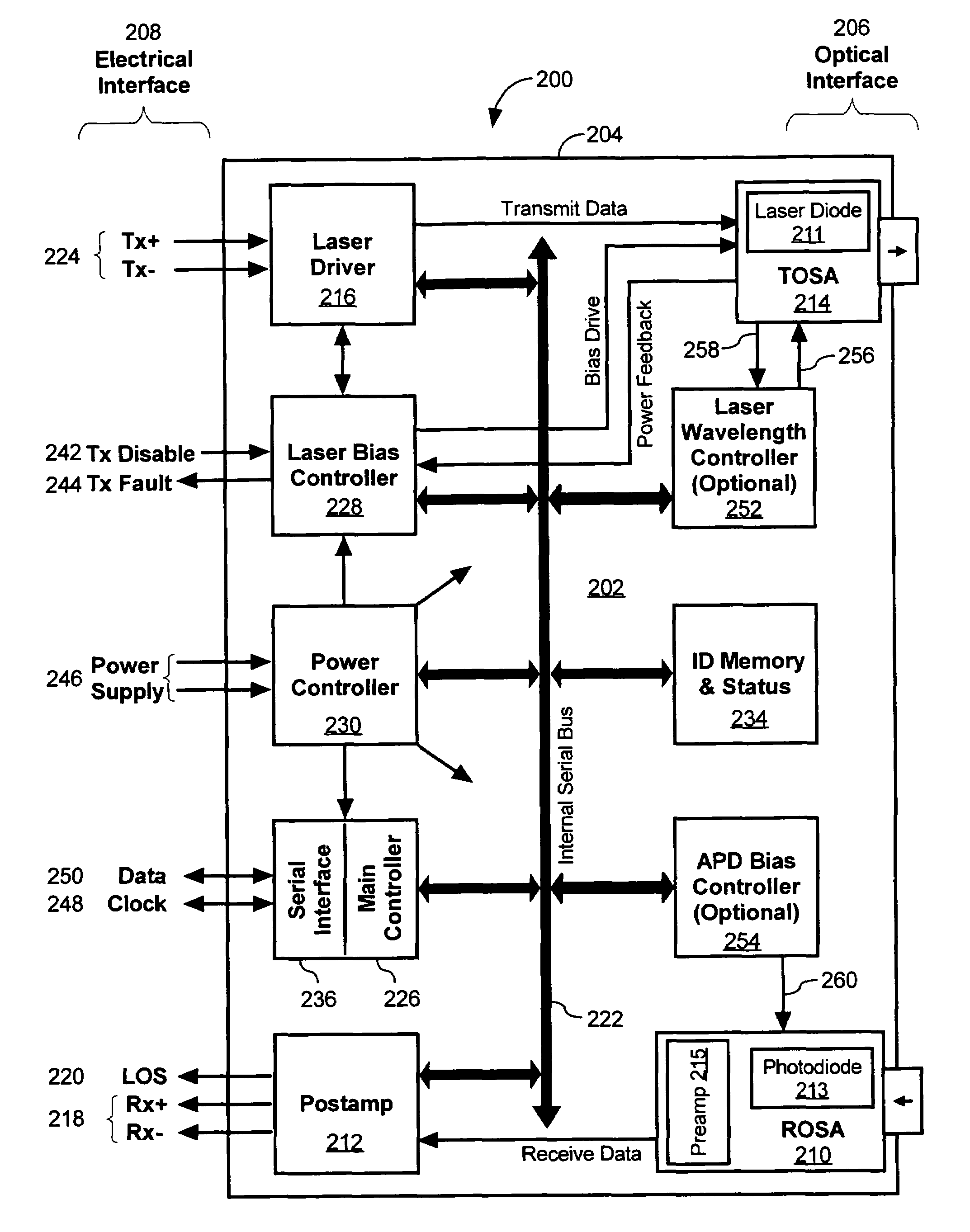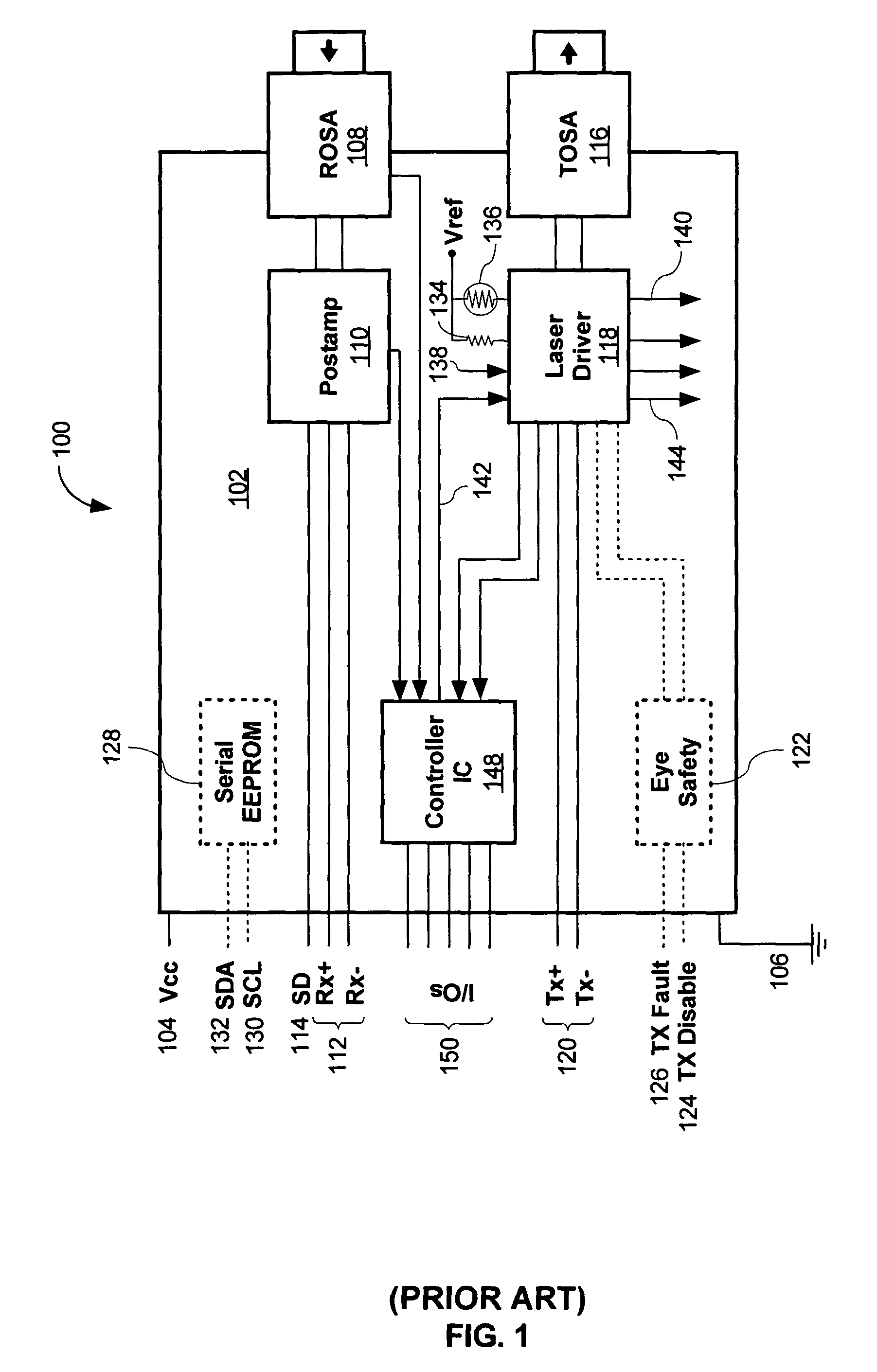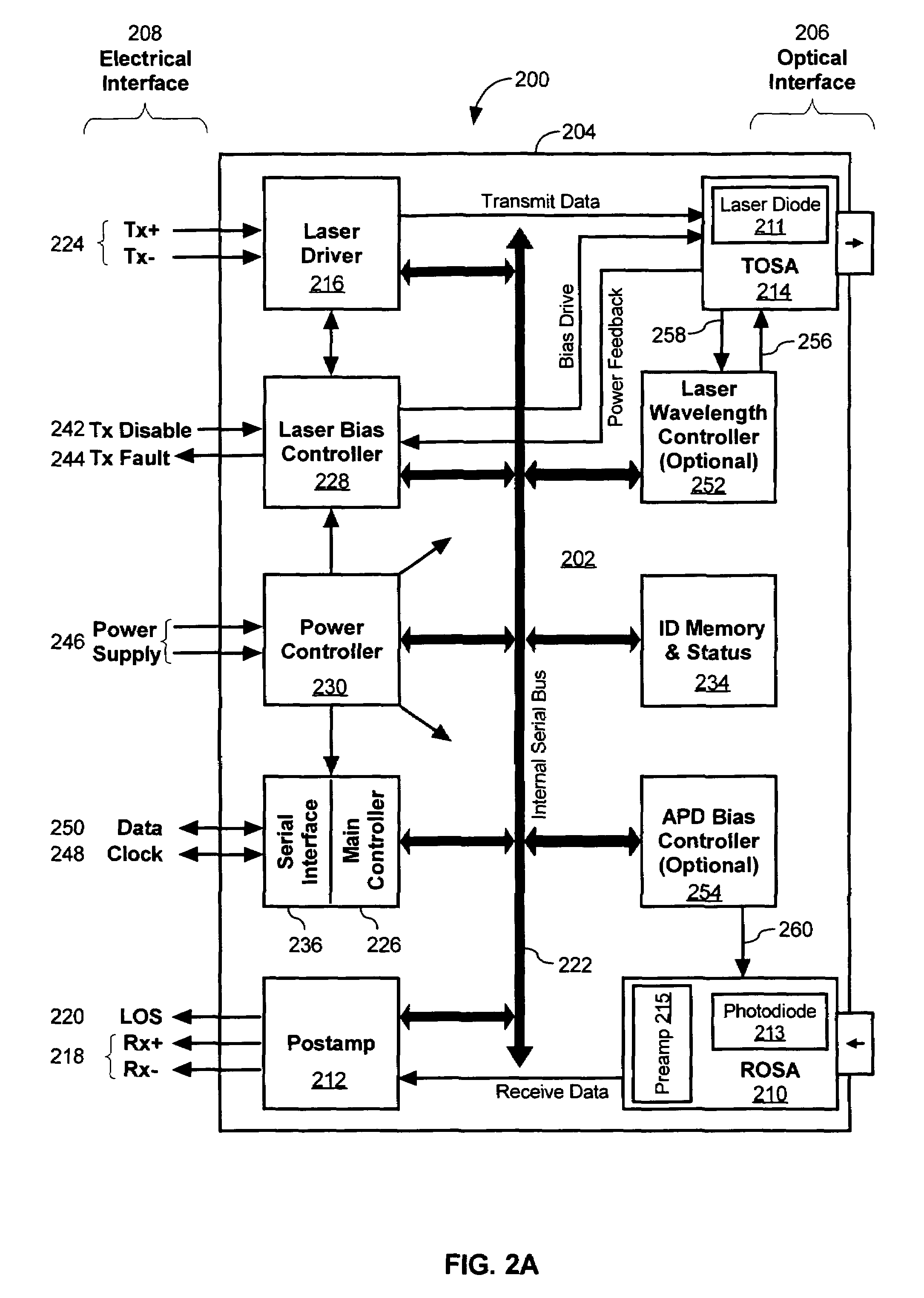Optical transceiver module with power integrated circuit
a technology of integrated circuits and optical transceivers, applied in the field of fiber optic transceivers, can solve the problems of significant increase in circuitry complexity, occupying valuable space on the circuit board of resistors and/or thermistors, and significantly reducing circuitry complexity, so as to reduce circuitry complexity, less circuit board space, and simple operation
- Summary
- Abstract
- Description
- Claims
- Application Information
AI Technical Summary
Benefits of technology
Problems solved by technology
Method used
Image
Examples
Embodiment Construction
[0033]The present invention utilizes a shared internal serial bus to communicate with multiple addressable components in an optical transceiver module. As will be shown, the shared serial bus simplifies overall transceiver setup, control, monitoring, and safety functions, while reducing system complexity, freeing-up valuable board space, and allowing for scalability. In a preferred embodiment, the serial bus monitors: laser bias current from the laser bias controller; laser output power; received average power; received modulated power; APD bias voltage; temperature; current in a thermoelectric cooler (TEC) controller; temperature in the TEC controller; wavelength; error rates; signal integrity; or the like.
[0034]FIG. 2A is a schematic representation of the circuitry and components of an optical transceiver module that uses a component address serial protocol, according to an embodiment of the invention. The transceiver module 200 preferably includes at least one circuit board 202 h...
PUM
 Login to View More
Login to View More Abstract
Description
Claims
Application Information
 Login to View More
Login to View More - R&D
- Intellectual Property
- Life Sciences
- Materials
- Tech Scout
- Unparalleled Data Quality
- Higher Quality Content
- 60% Fewer Hallucinations
Browse by: Latest US Patents, China's latest patents, Technical Efficacy Thesaurus, Application Domain, Technology Topic, Popular Technical Reports.
© 2025 PatSnap. All rights reserved.Legal|Privacy policy|Modern Slavery Act Transparency Statement|Sitemap|About US| Contact US: help@patsnap.com



